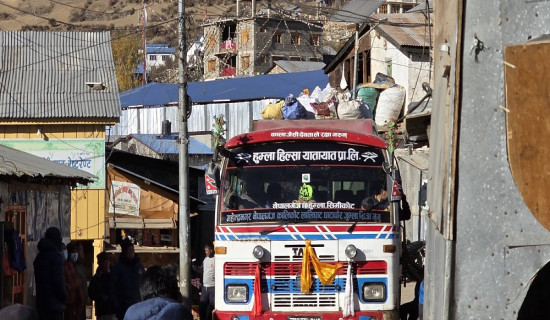- Saturday, 10 January 2026
Unleashing the Power of Video to Revolutionize Education
Lawa
Pyakurel
A
golden opportunity is awaiting the teachers. It can bring a revolution in the education
sector if the opportunity is properly utilized. Students will be able to
understand the villages, cities, and country. The knowledge will be transformed
from one place to another. Moreover, the student’s skills and talents will
gradually be honed, connecting them to international communities and leading to
enhanced achievements.
The
plan is to establish an environment where every school will encourage its
students to produce videos showcasing agricultural, social, cultural,
industrial, and scientific advancements and innovations.
The
students are consistently attending school and engaging in their studies. They
will eventually graduate from the school at a certain age and level. However,
the teacher has the ability to make their time at the school unforgettable by
taking the lead in video production. In schools that teach grades 1 to 3, the
teachers will encourage the students to participate and complete various tasks
themselves. In schools that teach up to grade 5, students from grades 4 and 5 will
be involved. Meanwhile, in school up to grade 8, students from grades 4 to 8
are encouraged to participate, and a similar level of involvement can be
implemented in schools that offer education up to the 12th grade.
Every
school has a teacher with a particular interest in technology. The students in
classes 8 and 10, or in schools that offer education up to 12th grade, have
something to offer regarding technology, with some students possessing skills
in the field. The teacher will identify these talents and provide opportunities
to the students, fostering a cooperative atmosphere among them.
The
2078 Economic Survey reports 34,368 schools in Nepal, with 26,454 being
community schools, 6,760 being institutional schools, and 1,154 being religious
schools. Of the total 70,92,000 students, 53,25,980 are in the basic level
(1-8) and 17,66,979 are in the secondary level (9-12). The universities and affiliated
campuses have 5,56,797 students and are being taught and trained by 280,765
teachers.
Nepal
has 16.5 million internet users, with 72% of the Nepali population between the
ages of 15-65 connected to mobile phones, 60% of which are internet-enabled
smartphones. 46% of these consumers use the internet for knowledge-seeking
purposes. This places Nepal ahead of countries like Bangladesh and Cambodia,
but still behind higher-ranked Asian countries such as India, Pakistan, and
Myanmar. Most households and organizations have access to at least one device
such as a DSLR camera, laptop, or desktop, and online data or Wi-Fi is readily
available, making internet access easy.
Every
day, schools experience various forms of joy, visible in student activities,
classrooms, and surroundings. Themes could include writing, sports,
cleanliness, art, dance, acting, simulated learning, scientific and
technological advancement, social and humanitarian responsibilities, field
trips, and research. The success stories of students, the motivating feelings
of parents, and the supportive views of the community also play a significant
role. This contributes to the school's promotion and cultivates a mindset of
appreciating small joys rather than constantly seeking bigger happiness.
If
a school broadcasts one audio-visual content daily, it will spread over 850,000
moments of happiness in 26 days. At this rate, over 1 crore moments of
happiness will be spread in a year. This helps shift the prevailing pessimism
in Nepal to optimism and provides a positive outlook on negative emotions. This
act strengthens trust and confidence in the school and the teacher. In short,
it opens the path for us to transform society and the minds of every house in
the country through positive energy, thinking, faith, and trust.
Camera and Cinematography
A
camera is essential for bringing visual elements to life. It captures events,
characters, actions, and images and transforms them into vivid visuals and
sounds.
The quality of audio-visual content is dependent on the quality of the camera used. Typically, 1920x1080 resolution video, also known as Full HD, is widely used globally and can be found in DSLR cameras, camcorders, handy cams, and even modern smartphones. For those who prefer a lower resolution, SD-resolution cameras are also readily available.
The
person behind the camera must have an understanding of the subject matter. It's
the responsibility of the cinematographer to assess the subject using common
sense. They need to quickly study the environment where the event or activity
is taking place and determine the placement of characters. This helps with
sound and lighting management. Excessive background noise or crowd noise can
diminish the main subject. Reflective or contrasting light can cause blurriness
in the scene and negatively affect its clarity. Poor audio-visual quality can
weaken the impact of the content and lead to audience dissatisfaction.
Interruptions,
pressure, or discomfort caused to characters during filming are unnatural and
can result in a fake outcome. The simplicity of audio-visual lies in capturing
the natural and realistic actions of characters.
Thus,
the person behind the camera should possess research skills, be familiar with
social dynamics, grasp the psychology of the characters, comprehend the depth
of the story, and produce visually appealing content. Anticipating and adapting
to events during filming shows the evolution of thoughts, ideas, and
perspectives, starting with audio-visuals.
The
camera should focus on the subject. For instance, if a character is laughing,
the central aspect is their emotional expression. It's essential to observe
their natural reaction or action after capturing their emotion. The object that
caused their laughter should also be shown. Then, the reality of the character,
location, and context should be revealed to eliminate any confusion about who
they are, where they are, and what they are doing.
Technically,
the audience's emotions and feelings towards the character can be evoked in the
story through the use of different shot sizes such as a composite shot, medium
shot, or close-up shot.
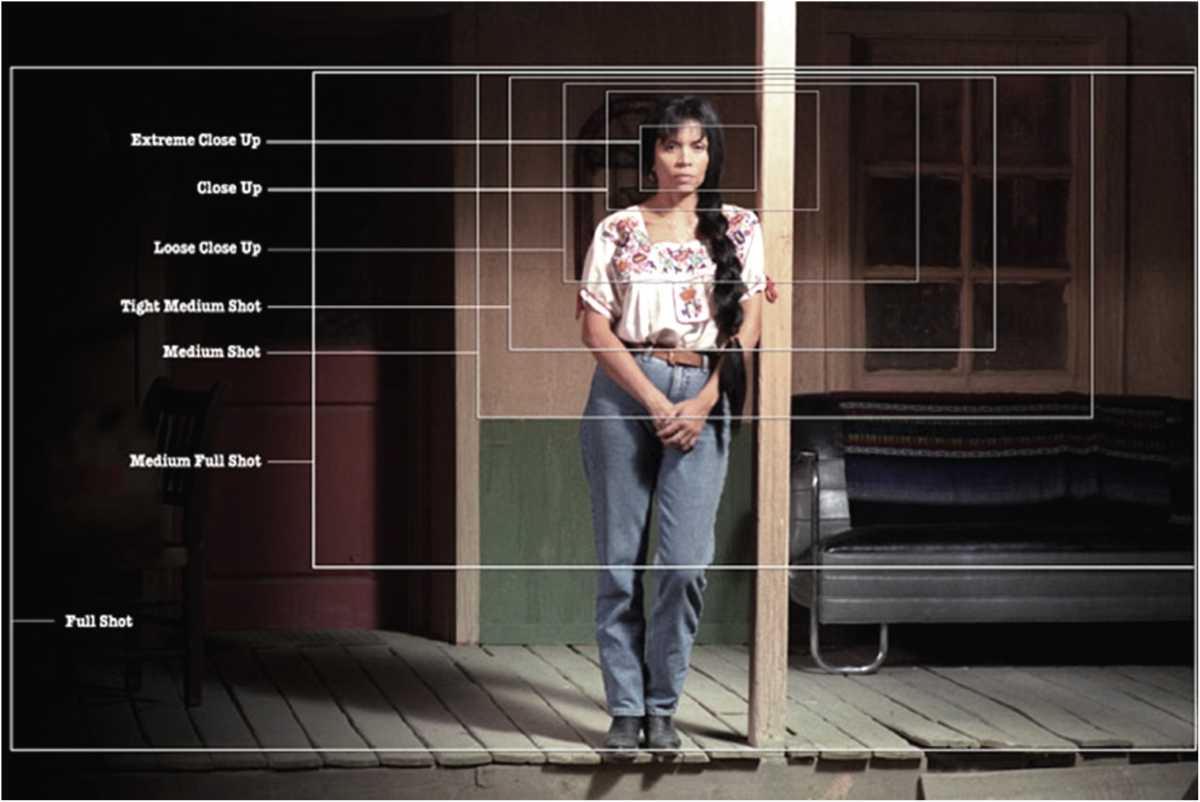
Scene Editing
We view scene editing as a
pre-production phase, also referred to as post-production. This stage involves
the editing of visuals, sounds, images, graphics, and text.
The utilization of software for
audio-visual editing on a desktop computer or laptop is a necessity. Mobile
devices can also be utilized for this purpose. Professional editing frequently
employs popular software such as Adobe Premiere, Final Cut Pro, and Avid.
However, less advanced results may be achieved using MovieMaker. These software
options can be easily accessed through search engines.
Editing
scenes from a mobile device can be challenging, but given the time constraints
and accessibility, it is feasible to do basic editing. For the Android
operating system, the software can be downloaded from the Google Play Store,
and for the iOS (Apple) system, it can be obtained from the Apple Store. Many
of these software or applications are offered for free, and popular options
include iMovie for Apple devices and Action Director Video Editor for Android
devices.
Adobe
Premiere can enhance the quality and efficiency of audio-visual production.
With the tools and processes provided by the software, the materials are
assembled. To start a new project, you need to import the necessary files from
storage, and then arrange them rhythmically in the timeline to create a
sequence. Thematic tools are available in both the audio and visual tracks to
further refine the final product.
When
it comes to audio-visual editing, the use of tools is crucial. With these
tools, you can add, remove, adjust, extend, shorten, manipulate, and cut
footage. If you want to insert additional scenes or include captions, it is
recommended to use separate tracks. The same goes for adding background music.
Although editing on a mobile device may be more challenging, the basic process
remains the same.
The
final stage of editing is rendering, which involves creating a final video file
in the desired format or in the format specified by the default settings.
The
visual editor acts as the initial viewer and judge of the final product. To
achieve the best outcome, the editor must possess a combination of good
judgment, patience, and determination. It is crucial for the editor to
understand their responsibility to maintain the authenticity and liveliness of
the subject matter as perceived by the audience.
If
the writing, shooting, and editing are aligned in their thoughts and ideas,
then it can be expected that a high-quality product will result.

Video Transmission
Social
media offers a cost-effective method of distributing videos. Not only are
social networks tools, but they also serve as weapons in the virtual realm.
Social networks are a powerful means of communication and information
dissemination for individuals, groups, societies, nations, and the world at
large. Citizen journalism finds its largest platform through social media.
Numerous sites such as Twitter as a microblog and blog, YouTube as a content
community, Facebook as a social networking site, and Second Life as a virtual
social world are actively utilized. People are able to express their thoughts
without restriction.
According
to Social Media Today, there are 18 million social media users in Nepal, with 9
million of them being Facebook users. A study conducted among students globally
in 2016 revealed that Facebook has more users compared to other social media
platforms. Facebook provides users with the ability to connect with each other
and upload videos.
YouTube
is a platform for uploading, sharing, and viewing videos. It can be used to
store feature films, movie clips, TV shows, music videos, documentaries, and
personal content. Google is another platform for uploading and storing videos
and information. The use of platforms such as Twitter, Instagram, and Pinterest
is growing. Many websites have implemented strategies to promote businesses and
generate revenue based on specific criteria. These media have the potential to
be used for both creative and destructive purposes.
Utilizing
social media to share and publish videos has numerous benefits. As the internet
and other means have created a virtual world, it is important for future
generations to wisely utilize virtual tools for positivity and happiness,
rather than for creating noise and abuse. Let's strive to make virtual groups a
highly interactive platform for sharing joy and spreading wisdom.
This
author emphasizes the title of the campaign led by Dr. Bidya Nath Koirala and
his team, “Teachers can make a difference". The implementation of this
idea has the potential to bring about a true 'educational revolution' by
connecting the students of villages and cities with the rest of the country and
the world.
(The author is a senior documentary
film editor/maker in Nepal.)



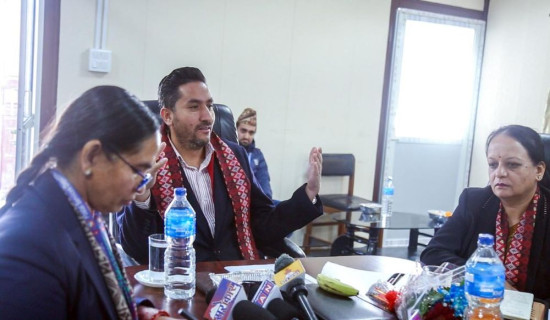
-square-thumb.jpg)

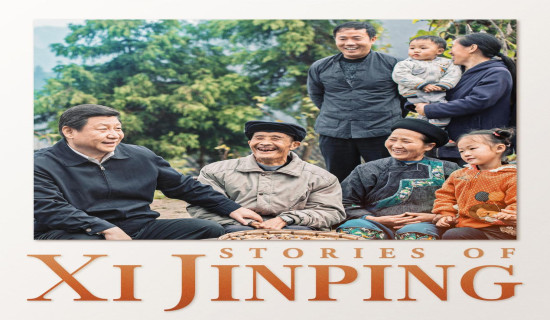

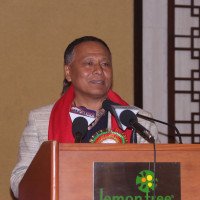
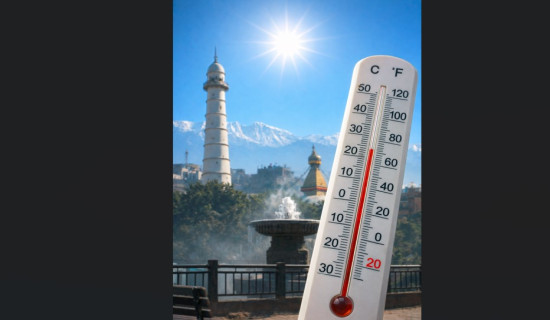
-original-thumb.jpg)
-original-thumb.jpg)


